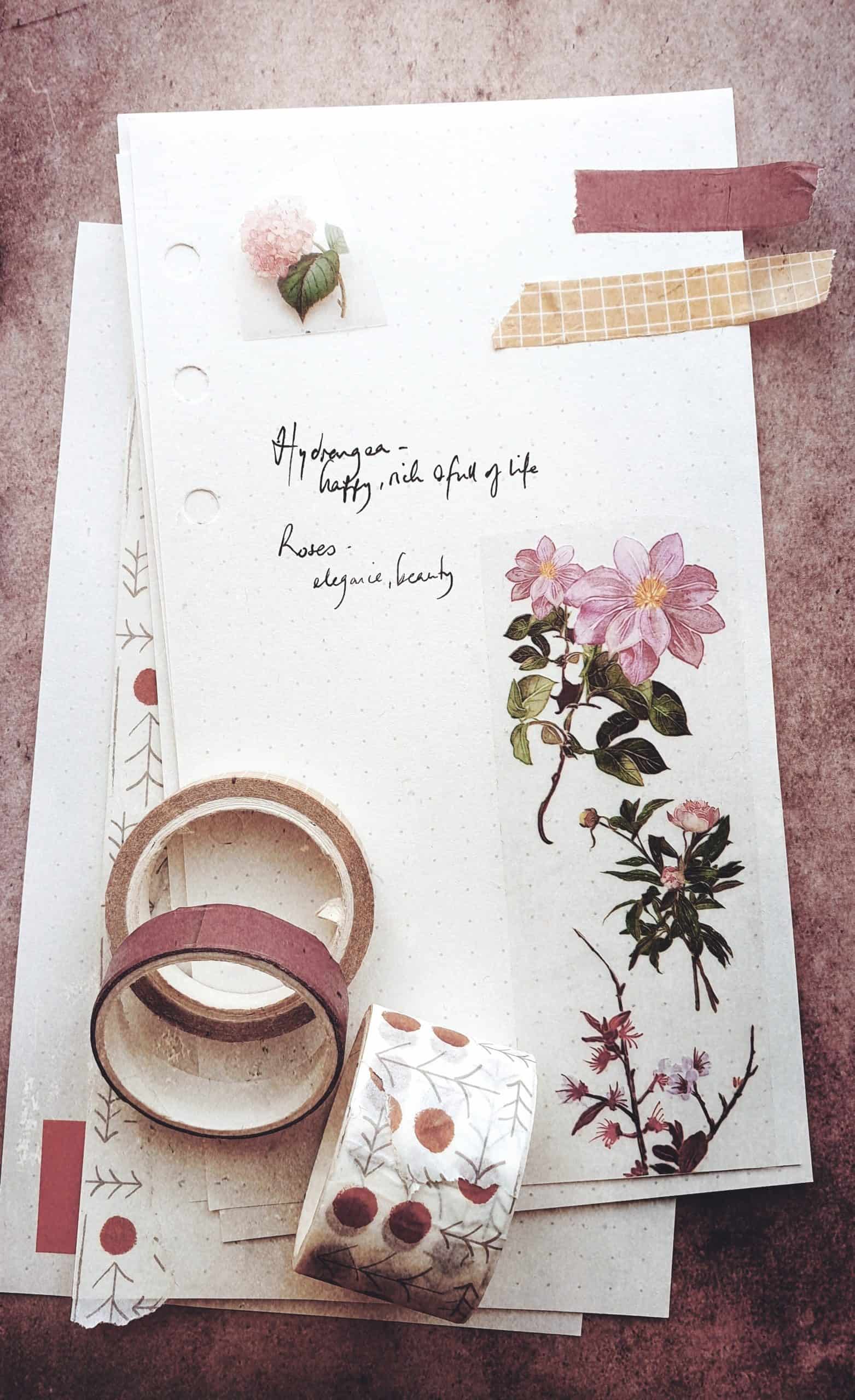When you have to think about tape, what first comes to your mind? Duct tape? Masking tape? Scotch tape? Most likely, the kind of tape that you have in your mind is made out of sticky plastic, and makes a mess to use and tape off. It might be drably-coloured and needs a pair of scissors to cut evenly, or, if you’re like me, your teeth to snip off the end when you apply it.
All of these traits, while identifiable in the public mindset as distinctly those of tape, do not come close to describing washi tape.
The most distinct feature of washi tape, differentiating it from all other types of tape you can get at a hardware store, is that it isn’t made out of wood pulp, plastic, or polymer, but rather is made, organically, from one of three native Japanese flora, all three or which are cultivated sustainably. For this reason, it is tougher than normal paper, but is still more delicate than the average hardware tape, so much so that you can easily cut it with your hands.
Another aspect of this material is that, unlike regular plastic or plastic-coated tape, washi tape is completely recyclable and biodegradable, meaning that you can use it as a safe wrapping or decoration without having to throw it away separately when you recycle the cardboard box on a gift.
What is washi tape?
In order to fully describe washi tape, we first need to get into what washi paper is. A staple of Japanese papercraft and artworks, from origami to painting, printmaking to cloth weaving, there are many, many varieties of washi paper, most of which are still being made today.
Washi (和紙) refers to any paper made from the inner bark of one of three plants – gampi tree, mitsumata shrub, or the paper mulberry bush, in the traditional style of Japanese paper-making, with Wa meaning Japanese and shi meaning paper.
The process of making different types of washi paper depend heavily on manual artisans and craftspeople, as well as aspects like water temperature, various applications of chemicals to bleach and dye the paper, and, just as importantly, the availability and health of the plants used in the creation of these forms of paper, with paper mulberry bushes serving as the base ingredient in a large portion of washi papers.

How to use washi tape?
So, now that you know what washi is, we can get to the uses of washi tape. One of the most popular uses of this art tool is to scrapbook, either by buying plain coloured washi tape without any designs and writing on top of it with marker, of by buying washi tape with symbols and words specifically drawn on them for the use of adding them to scrapbooks.
You can add arrows to your bullet journals to indicate the progression of stages from incomplete to complete, or from short term goals to long term goals. You can also use this so mark out a geometric calendar, in order to have a more creative and colourful space to write down your tasks for each day on.
You can even use it to signify important dates in the calendar, like putting down celebratory washi tape with candles and cake to represent upcoming birthdays, or winter-themed tape to let you know when the first day of winter officially is.
Outside of journalling, washi tape can be an art form all of its own. Some like to use it while stencilling, in order to achieve clean lines without damaging the canvas, like harder, more unyielding tapes would, or use washi tape to outline a paper drawing in a sustainable and creative way.
Once the washi tape is used, and you wish to dispose of it, you can recycle it like you would any paper, or throw it away with the guarantee that it’ll decompose naturally, being made of plant matter, but throwing it away is only the final part of a creative project, when there’s so much else to do with washi tape.
You can use it as a pop of creativity and colour when wrapping gifts or packages, add it to paintings as a background or foreground for added texture, or use it to create a chore checklist for you and your housemates or family. Because of the particular (and gentle!) glue used on washi tape, which is less destructive than regular tape, you can feel comfortable using it on delicate paper, since it can easily be removed and reused without losing adhesion or damaging either the tape or the surface that it was placed on.
You can even let your kids use it on walls or their bedroom door to customise their space, while resting assured that it won’t leave any lasting damage to the paint or doorframe.
To conclude…
Washi tape is a Japanese papercraft that is made using sustainable, reusable resources, and can be added to all kinds of artworks and projects for an added splash of colour and creativity. While you probably shouldn’t use a light tape like this to fix a leaky faucet or a damaged pipe, it can be cut using nothing but your hands and reapplied as you like, making it a perfect addition to journals or paintings.
As a craft with kids, it can be used to learn more about Japanese art forms, or just as a fun way to customise and add their own personality to their bedroom. As an organisation method, it can be a visual aid to represent a project being done or in the steps of being completed, or as a gold star for finishing a creative endeavour.
Having read all of this, washi tape might seem to you as something fun to add to your projects for a cheap price, or as simply something fun to experiment with, both of which are perfectly good ways to start adding it as a tool or aid for your next papercraft or journal.
Available both online and in craft stores for a fairly reasonable price, there’s no reason not to give washi tape the chance that it deserves.


I loved this article! It was very interesting to learn where washi tapes originate from. Also got a few more ideas of the ways they can be used